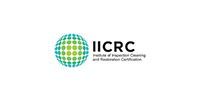Mold Damage Restoration
Serving Northern IL and Southern WI
24/7 Emergency Services
Free Prompt Estimates
Works With All Insurance Companies
Request Lorem Epsom
Hero Request Form
Thank you for contacting us.
We will get back to you as soon as possible.
Please try again later.
Take Action Against Mold Damage Today!
When it comes to mold damage, time is of the essence. RESTORx is here to provide swift and effective mold damage restoration services, serving Northern Illinois and Southern Wisconsin. We understand the urgency of mold issues and offer comprehensive solutions to protect your property and health. Our services include:
- Mold inspection and assessment
- Mold remediation and removal
- Water damage repair
- Air quality testing
- Structural drying
- Dehumidification
Don't let mold compromise your home or business.
Reach out to us for prompt and professional mold damage restoration.
Mold: A Silent Threat to Your Property and Health
Mold can be a serious problem, often lurking unseen in damp, dark areas of your property. Here's why you might need our mold damage restoration services:
- Visible mold growth on walls, ceilings, or floors
- Musty odors in your home or business
- Recent water damage or flooding
- Increased allergic reactions or respiratory issues
- Discoloration on surfaces
- High indoor humidity levels
Ignoring these signs can lead to extensive property damage and potential health risks. Our team at RESTORx is equipped to handle mold issues of any scale, ensuring your space is safe and healthy once again.
Why Choose RESTORx
When it comes to mold damage restoration, RESTORx stands out as the premier choice in Northern Illinois and Southern Wisconsin. Here's why our customers trust us:
- 24/7 emergency services available
- Rapid response within two hours for emergencies
- Free prompt estimates
- Next-business-day responses to call back requests
- Full-service contractor with a personal touch
- Family and locally owned and operated
- 100% odor removal guaranteed
- Over 47 years of experience in the industry
- Best in the region since 2011
- Established in 1979
- Works seamlessly with all insurance companies
Our commitment to excellence and customer satisfaction sets us apart. We combine decades of experience with cutting-edge techniques to deliver superior mold damage restoration results.
Contact Us
Don't let mold damage wreak havoc on your property or health. RESTORx is ready to tackle your mold issues with precision and care. Our team of skilled professionals is standing by to assess your situation and provide tailored solutions.
Take the first step towards a mold-free environment.
Contact us today and let RESTORx restore your peace of mind along with your property.
- Bullet text
- Bullet text
- Bullet text
- Bullet text
- Bullet text
- Bullet text
- Bullet text
- Bullet text
- Bullet text
- Bullet text
Title or Question
Describe the item or answer the question so that site visitors who are interested get more information. You can emphasize this text with bullets, italics or bold, and add links.Title or Question
Describe the item or answer the question so that site visitors who are interested get more information. You can emphasize this text with bullets, italics or bold, and add links.Title or Question
Describe the item or answer the question so that site visitors who are interested get more information. You can emphasize this text with bullets, italics or bold, and add links.

CP #1 Headline
CP #1 Body
CP #1 CTA Lead-in
Not valid with any other offers or promotions. Restrictions apply.
Must mention this coupon at the time of scheduling.
Gallery Heading H2
Reviews
Best in the Region
Since 2011
We've been the top choice in damage restoration for over a decade. Our experience and expertise are unmatched in Northern Illinois and Southern Wisconsin.
Contact Us Today





